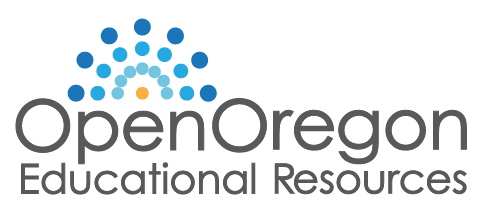This post was contributed by Skye Nguyen, Technology Analysis & Design Specialist, Lane Community College.
At Lane Community College in July of 2023, Career Pathways came to the Accessible Technology Center (ATC) with the goal of developing a grant-funded course for faculty to make accessibility improvements in their courses. This was opportune timing as Lane’s Advancing Digital Accessibility action plan, developed through Open Oregon Educational Resources, had just been finalized. This course aids in the action plan efforts by providing support for making in-house instructional materials accessible. Not only would it develop faculty skills around making their courses accessible but it also supports Lane’s mission of recognizing and respecting the unique needs and potential of each learner. The online course is openly licensed so that other colleges can adapt and use it in their own teaching communities.
What Is It?
The new OER, Digital Course Accessibility for Educators, is a 10-hour facilitated online course for educators to learn about accessibility and Universal Design for their online content. This work was funded with a grant from the Inclusive Career Advancement Program (ICAP) through the Department of Education. ICAP is a grant-funded program through the U.S. Department of Education and is supported by Cornell University and Portland Community College.
The intended audience for this course is educators who post content online in a Learning Management System for their students. The work done in this course is project and real-world-scenario based, so that as instructors use tools, complete tasks, and create plans, they are practicing to remediate their own courses. The course starts with a short basics section that provides a baseline for beginners and a refresher for those who have been working with accessibility already. It covers important topics such as remediating a document, designing course content with UDL in mind, creating a plan for improving accessibility, and executing that plan in their own course.
The goals for the end of the course include:
- Explain the key principles of accessibility and Universal Design for Learning (UDL) as they relate to digital courses and materials.
- Identify who is responsible for ensuring course accessibility and where to go for support.
- Discuss institution policy around accessibility of online content.
- Assess course material using an accessibility checklist.
- Analyze accessibility of online content by using Ally (an accessibility checker), determining what changes need to be made, and apply the changes to distribute accessible content.
- Implement an accessibility plan for digital content in a course.
- Create accessible Google Documents, Google Slides and video/audio content for a wider audience range in a digital environment.
- Create accessible content in an LMS for a wider audience range.
- Design a course and its content for accessibility and Universal Design for Learning (UDL).
You can even preview the course as a guest!
How Did It Do as a Pilot?
The 5-week pilot included two Lane Community College faculty members in November and December, 2023. Both identified their experience with the course as 4 of 5 (where 1 is poor and 5 is excellent). Their feedback suggested that the course was too basic for some faculty, so in Version 2 the intended audience is clarified as faculty with limited to no experience with accessibility of digital content. The participants expressed interest in intermediate and advanced courses as separate professional development opportunities.
Additional valuable feedback from the pilot:
- The expected length of time to complete turned out to be longer than estimated.
- Interest in learning about new tools in accessibility, especially around PDF accessibility beyond Adobe Acrobat Pro DC.
- Interest in an in-person work session.
- Interest in accessibility of interactive activities in the Learning Management system, e.g. drag and drop question types.
- Run the course closer to the middle or beginning of the term.
See the full list of fixes applied in V2.
What’s Included and Where to Find It?
Formats for this OER include:
- Moodle backup file (Uploads to Moodle and other LMS’s that have a Moodle import option)
- Moodle Common Cartridge file (Uploads to Canvas, Blackboard, and other LMS’s, but may have more limited importability.)
- Google Drive course file (Includes all content in Moodle and common cartridge but in Google docs. Usable for anyone who does not have an LMS listed or needs access to source files for those using LMS’s above.)
These can be found at the links below:
What Could Come Next?
Future applications include:
- Further improvements in student-to-student and facilitator-to-student interaction.
- Development of a full pathway of levels.
- Development of additional potential topics such as PDF accessibility tools, explore and discover a new accessibility of your own, and activity accessibility in the learning environment.
Version 2 Fixes
- Build in optional “lab time” activity in supported space.
- Interaction in the course.
- Confirm and clarify Book and Quiz at Beginning information about accessibility of technology for employees.
- Accuracy of Lane info.
- Build out differences and services of ID services and ATC in book and potentially quiz at beginning.
- Accuracy of Lane info.
- Add template page with course messaging templates.
- Course administration improvement.
- 5.1 Clearer Instructions: Be more clear, only one piece of content needs to be done.
- UDL improvement and clarifies expectation
- 5.1 Clearer Instructions: Clarify bullet about the option for going out of the sections chosen to work on for the course to complete the assignment.
- UDL improvement and clarifies expectation
- Make use of tools more clear. Identify they are lacking in areas and are a jumping off point to which you can use skills to check and verify the rest.
- Improve expectation of tools and that this heavily leans on improving your own evaluative skills.
